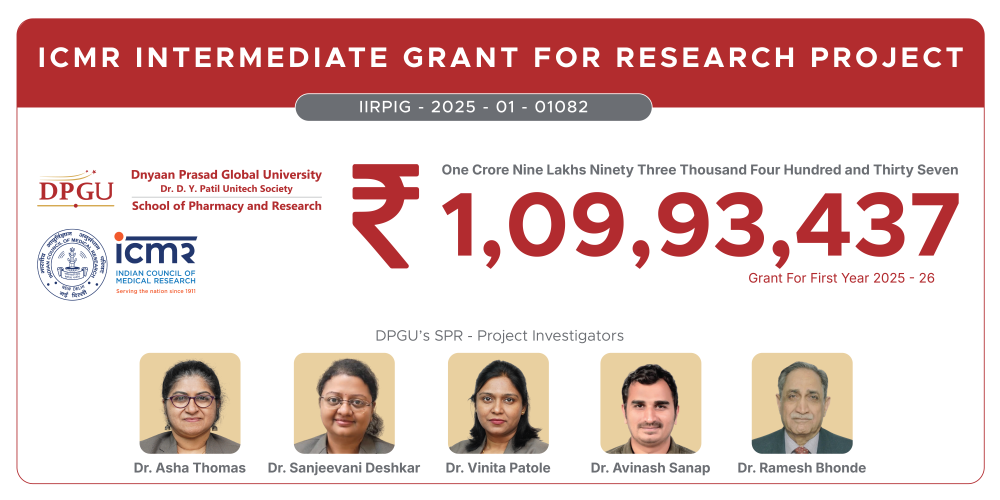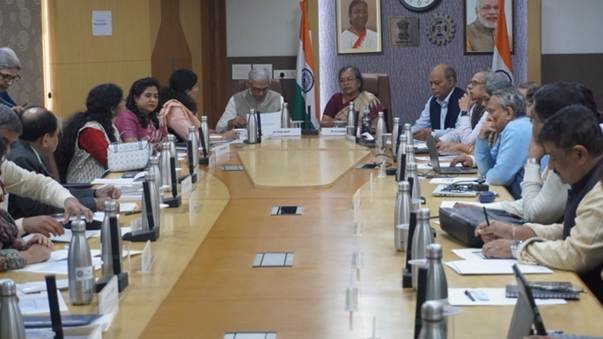Advanced robotic technology revolutionising healthcare in unprecedented ways
September 14, 2023 | Thursday | Features | By Gunjan Sharma
A technology constantly evolving to meet the increasing demands of the medical field
It is 10 in the morning, and the Operating Room (OR) at Max Hospital, Saket is abuzz with surgeons' chit-chat. The patients are being wheeled into the ORs on the second floor of the gastro-intestinal and general surgery department. Three patients are to undergo surgeries – two for removal of the gall bladder and one for hernia repair.
One of them is in his forties. He had been admitted for severe abdominal pain caused by gallstones blocking his bile duct. Dr Pradeep Chowbey, a renowned gastric surgeon, and chairman, Max Institute of Laparoscopic, Endoscopic & Bariatric Surgery, was at the console of the Versius, a next-generation surgical robotic system developed by CMR Surgical, a Cambridge-based company. The 70-year-old doctor’s team had already inserted the surgical arms of the Versius into the patient's body through three small incisions.
Dr Chowbey could see a three-dimensional image of the gallbladder and its surroundings on the large screen attached to the console. His wrists firmly rested on the console, providing adequate support to his elbows, as he navigated the complex procedure. The gallbladder is nestled within fat deposits, with two major blood vessels tangled around it. He enlarged the area he needed to operate on, and with fine precision, untangled and clipped the blood vessels. Then, without making any extra incisions or touching the patient's liver, which was adjacent to the gallbladder, he excised the gallbladder and removed the gallstones protruding from the bile duct. In a mere 10 minutes, Dr Chowbey completed the procedure with unmatched precision.
"That's the beauty of robots. They provide me with an entire 3D view of the organ, allowing me to operate without causing any damage to the surrounding tissue. This not only ensures a quicker recovery for the patient but also results in significantly less pain compared to conventional and laparoscopic surgery." said Dr Chowbey (seen in the image below) as he moved to the next OR for his second surgery of the morning.

His technician folded the console and wheeled it into the next OR. "See, it's portable, allowing us to reduce the time spent preparing the OR after we wheel out the previous patient after surgery. By the time I finish one surgery, my team in the operating room is already preparing the next patient. We use the device so efficiently that its cost to the patient is almost the same as that of laparoscopic surgery."
Advanced robotic technology is revolutionising healthcare in unprecedented ways, constantly evolving to meet the increasing demands of the medical field. These robots are not only reducing risks in complex surgeries but also helping patients in their rehabilitation, dispensing medications, and even preventing fall when patients are alone. This technology is gaining popularity among thousands of medical professionals across India, including those in Tier-2 and Tier-3 cities.
According to a report by BIS Research, a technology research and advisory firm, the Indian surgical robotics market is expected to experience significant growth, with an estimated compound annual growth rate (CAGR) of 20% between 2017 and 2025. This growth is projected to result in a market value of $350 million, a substantial increase from the $64.9 million in 2016.
The first surgical robot, Da Vinci , made by California-based company Intuitive, arrived at Apollo Hospital, Delhi in 2002. However, the adoption of robotic surgeries in private hospitals in the National Capital Region (NCR) can be traced back to 2015-2016. In 2018, the number of robotic surgeries across various specialities such as urology, general surgery, gynecology, and pediatrics saw an increase of around 50% compared to 2016. The adoption of robotic technology picked up across India post-Covid.
Mandeep Singh Kumar, Vice President and country GM, Intuitive Surgicals (as seen in the image below) says, “The robotic-assisted surgery (RAS) market is rapidly expanding in India. The growth is driven by an increased interest among surgeons to adopt technology to deliver improved clinical and patient outcomes.”

While hospital networks and teaching institutions in larger cities led the early adoption of RAS, now, he says, there is growing adoption across wide range of customers across all geographies, including large hospital networks, government tertiary care and teaching institutions, independent private hospitals, and state government hospitals. “India has over 800 robotic-assisted trained surgeons working across 125 plus da Vinci surgical programs focused on wide ranging specialties,” he adds.
A typical robot employed in abdominal surgeries features four arms. While three are dedicated to holding various surgical instruments, the fourth is equipped with a 3D camera. The three instrument-holding arms are controlled by a computer and mimic the precise movements of the surgeon, who operates the system from a nearby console. The surgeon can closely monitor and control the surgical procedure on a high-definition 3D screen connected to the robotic system. This screen offers a detailed view of the organ being operated on.
CMR Surgical launched its next-generation Versius in India in 2019. In just two years, the company has successfully deployed its robotic systems in 38 hospitals across India and has trained over 300 surgeons in robotic surgery.
“Indian hospitals, including those located in Tier-2 and Tier-3 cities such as Lucknow, Nagpur, Ghaziabad, and Faridabad, have enthusiastically adopted this technology. Surgeons are happy because these advanced machines allow them to perform complex surgeries with greater ease and precision” says Pradeep Singh, Commercial Head for CMR Surgical in South Asia.
What is making robotic surgery so popular among surgeons is the fact that robotics has significantly reduced human labour and increased efficiency. "Robotic-assisted surgeries allow surgeons to perform more procedures in a shorter amount of time, increasing the capacity of healthcare facilities to serve more patients," says Dr Chowbey.
Patients also benefit as surgical robots enable minimally invasive procedures, resulting in shorter hospital stays, reduced recovery times, and lower healthcare costs. Some healthcare centres are also using robots for tasks like drug dispensing, laboratory analysis, and sterilization.
The ability to operate in difficult-to-reach areas in the human body is another advantage. "We have used it for spine surgery for three years, a procedure where it is difficult to reach certain areas of the spine. Spine surgeries require extreme precision as the spine is surrounded by blood vessels and nerves. When we feed the patient's CT scan into the robotic system, using AI, the robot skilfully navigates the intricate spinal regions with utmost safety, reducing tissue trauma and leading to quicker recovery," explains Dr Rajesh Malhotra, a noted orthopaedic and spine surgeon at Apollo hospital, Delhi.
“It provides a sense of relaxation to the surgeon by alleviating both physical and mental strain. It's like a periscope. Just as one can see outside from a submarine using a periscope, robotics allows you to see areas behind the organ, significantly improving our reach and access during surgery” says Dr Malhotra.
Robotics also provides a personalised fit for joint replacements, minimising errors significantly. Dr Malhotra explains, "In hip and knee replacements, there can be a margin of error of up to 3 degrees, but with a robot, we can virtually eliminate these outliers.
There are two types of robotic systems—automatic and semi-automatic. In automatic robots, you feed the data, and the robot handles the entire process. In semi-automatic ones, the robot positions itself, but the actual surgical cut is made by the surgeon. It is like flying a plane in autopilot mode. So, the planning is done by the surgeon, but the execution is by the robot", says Dr Malhotra. “This technology allows for precise and tailored joint replacements, enhancing patient outcomes.”
Robotics in orthopedic surgery are fast gaining popularity
Cuvis joint robotic system, for example, has been deployed in 62 hospitals across India. Apart from allowing surgeons to study the multi-dimensional image of the bone and tissue, its AI algorithms help position its arms. “It handles 90-95 per cent of the surgical work autonomously, always seeking validation from the surgeons before executing each step. This cutting-edge technology costs approximately Rs 5 crore", says Navish Bagla of Meril, which markets Cuvis joint robotic system, a South Korean brand, in India.
So, can robots replace human intervention in surgeries in the coming years? "The technology should never be our master,” says Dr Malhotra. “Even with automatic robots, the surgeon's role in planning and decision-making constitutes a significant 90 per cent of the surgical process. Robotic technology is a valuable tool that enhances precision in procedures like fixing osteoporotic fractures, trauma cases, and knee and hip implants. It should only be a supportive element to human expertise and judgment in healthcare”.
Agrees Dr Yash Gulati, advisor, Orthopedics, Apollo Group (as seen in the image below), who has been using Mako Stryker, a semi-automatic robot for knee and hip replacement surgeries for the past couple of months. “It ensures that the amount of bone that needs to be removed is much less, the soft tissue handling is better, and the alignment of the implant is near perfect when compared to a traditional surgery,” he says.

Statistically, orthopaedic implants are successful in 85 percent of cases, he explains, which is considered a good success rate. “But our aim is to achieve 100 per cent success rate. Some patients experience niggling pain or discomfort even after a successful surgery. The longevity of an implant depends on how accurately it is fitted in the body and how closely it replicates the original tissue,” he says, adding , “All human beings are different, and similarly, the anatomy of the knee and hip of all individuals is different. What we have been doing conventionally is taking an average size and positioning and making the implants accordingly. With robots, we do a CT scan to determine the exact size and angle for implant placement. This allows us to pinpoint the patient’s original axis, and the implant can be precisely tailored to mimic it. The result is a near-perfect alignment”, says Dr Gulati.
Robots, says Dr Prasoon Kamra, Director, Department of Orthopedics, Sarvesh Hospital, Hissar, (as seen in the image below) have changed his perception of a successful surgery. “It has been only a couple of months since I started performing surgeries using robotic technology. I have done hundreds of successful surgeries and my patients have been highly satisfied with the outcomes, but I believe that robotic surgical system has further improved the precision, with significantly better surgical outcomes,” says Dr Kamra.

However, there is one major concern with the use of robotics in surgeries—the high cost of surgery for patients. The robotic solutions are expensive and the cost is indirectly passed on to the patients. A basic robotic system for abdominal procedures, including those in gastro-intestinal, gynaecology, urology, and others, costs between Rs 10 crore and Rs 15 crore, and annual maintenance can be around Rs 4.5 lahk. The high cost makes the technology unaffordable for many smaller surgery centres and public healthcare facilities.
“The only way to bring down the cost of robotic surgeries is to use these machines for as many surgeries as possible. When more surgeries are conducted, the cost per surgery automatically comes down," explains Dr Kamra. “The good thing is most patients know the advantages of robotic surgery and are comfortable spending a little extra for the safety it offers. As a result, now the difference between laparoscopic surgery and robotic surgery is less than 20 percent.”
Besides, the robotic companies are making flexible robots which allows hospitals and surgeons to buy robots according to their specific needs. For example, made-in-India Mantra robots by SS Innovations, feature 5 arms, each mounted on a separate cart. “Most surgeons typically require three to four arms, which brings down the cost for them. Besides, we offer hospitals easy payment plans, allowing them to maximize the benefits of robotic solutions without imposing excessive financial burdens on their patients,” says Dr Sudhir Srivastava, founder of SS Innovations (as seen in the image below).

Experts express optimism about the future of surgical robotics in India. Dr Seema Grover, chief, physiotherapy and rehabilitation, at Apollo Hospitals in Delhi, says robotics holds a lot of potential in the rehabilitation of stroke-affected patients. “ The process of rehabilitating a paralyzed patient often involves creating alternative neural pathways in the brain using brain plasticity. Robotics in physiotherapy plays a pivotal role in facilitating this recovery journey,” she says.
So, how does it work?
Dr Grover explains that the brain relies on receiving stimuli for its proper function. In cases where nerve cells have died or are in a state of spasm, as is often the case with paralyzed patients, the brain doesn't receive the necessary stimuli. "Repetitive movement of a body part may eventually generate alternate pathways to communicate with the brain. However, achieving this level of movement manually is not possible. Robots play a crucial role in facilitating this process. Moreover, they also help in repositioning bed-ridden patients," says Dr Grover.
Dr Ashish Dutta, a professor in the Department of Mechanical Engineering at IIT Kanpur, is the innovator behind a ground-breaking wearable exoskeletal robot, which operates in tandem with a brain-computer interface, marking a significant advancement in the field of robotics and assistive technology.
The patient wears the exoskeleton on the affected hand, observes the movement on a computer screen and tries to mimic it using the robot. Physiotherapy, he explains, is the primary method for restoring movement in a stroke patient. Stroke can affect the part of the brain that controls movement in a specific part of the body. Through physiotherapy, continuous stimuli are sent to the brain , prompting it make alternate pathways for communication between the brain and the affected limb.
“But it is crucial that these movements are performed with conscious effort. If the patient is distracted or engaged in other activities, the effectiveness of these movements may be diminished. With our rehabilitative robot, the patient has to focus on the computer screen and mimic the movement. During our clinical trials in India and the UK, we have seen a 100 per cent recovery in patients who previously showed no recovery with manual physiotherapy,” says Prof Dutta. The device is set to undergo further clinical trials involving a larger patient population before it is introduced to the market.
“The entire solution, which costs only about Rs 2.5 lakh, could be a game changer for stroke patients across the world,” says Dutta. “There are many other robotic solutions being developed across Indian engineering colleges for various other health conditions. Soon we are going to see a revolution in healthcare robotics.”
A range of robotic solutions are being developed and tested in diagnostics and imaging-- for biopsies, endoscopy, ultrasounds, etc.
Several robotic solutions are currently under development and undergoing testing in the field of diagnostics and imaging, spanning a range of medical procedures, including biopsies, endoscopy, ultrasounds, and more.
“The future of robotic surgery systems holds the potential for surgeons to perform procedures on patients in a separate sterile environment without any direct human contact or interference,” says Dr Srivastava. “Mixed reality, the convergence of virtual reality and robotics, enabling surgeons to perform surgeries while simultaneously viewing the patient's anatomy and scans, is not far."
Dr Mahendra Bhandari, director of Robotic Surgery Research at Henry Ford Health System in Michigan, USA, and CEO of the Vattikuti Foundation, a non-profit organisation dedicated to advancing robotic surgery in India, believes that robotics in healthcare will experience significant growth. This growth, he points out, will be driven by several factors, including the availability of a variety of surgical robots from multiple vendors, an increasing number of trained doctors, and the commitment of both government and corporate hospitals to invest in surgical robots.
“Surgical robots are now being used in newer medical specialities like joint replacement and coronary artery bypass grafting. With the availability of robots from at least half a dozen manufacturers the cost of surgeries is bound to go down,” he says.
Agrees Dr Vivek Bindal, who started Indian chapter of Clinical Robotic Surgery Association, the USA in 2019, “New training facilities are coming up to provide robotic surgery skills to hundreds of surgeons. This training will enable these surgeons to deliver better outcomes to patients, ultimately increasing access to high-quality medical care and reducing costs,” he says.
Click here for an exclusive conversation with Dr Sudhir Srivastava, founder of SS Innovations
Gunjan Sharma
gunjan.sharma@mmactiv.com















